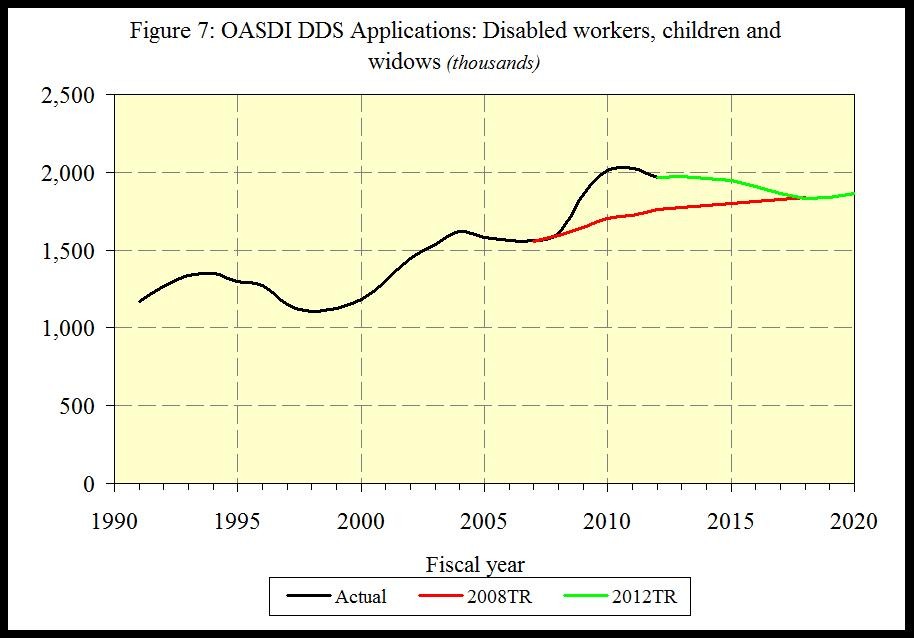The Social Security Changes You Can Expect
Post on: 7 Апрель, 2015 No Comment

iStockPhoto/ThinkStock
Youve probably heard a lot lately about President Barack Obamas Chained CPI (Consumer Price Index) budget proposal, which would cut future Social Security annual cost of living increases, as Ill explain shortly. But Id like to tell you about other ways Social Security may be changing to remain solvent and the one strategy for claiming benefits you might want to take advantage of before it disappears.
 
I learned about these possible Social Security changes during my fellowship attending the National Press Foundations 2013 Retirement Issues program in Washington, D.C. this week. Our group of 18 journalists had a chance to meet with leading experts, including self-proclaimed retirement geek Mary Beth Franklin (a contributing editor for Crains Investment News), who discussed the retirement challenges America faces and what Washington is or isnt doing to address them.
 
To set the scene: According to the 2012 Social Security Trustees report. the Social Security Disability Insurance Trust Fund will be exhausted in 2016 (thats pretty darn soon) and the Social Security retirement program (officially known as the Old-Age and Survivors Insurance Fund) reserves are projected to run out in 2033, 20 years from now.
 
 
With a few minor tweaks, the problems can be solved, said Debra Whitman, executive vice president for policy, strategy and international affairs at AARP. The catch: There are pretty major differences between the tweaks that make sense to Republicans and those favored by Democrats in Congress and Obama.
 
So what might happen to keep the gas tank for these programs from hitting E? 
 
Look for some sleight of hand to forestall insolvency in the Social Security Disability Trust Fund. To oversimplify a bit, Social Security pays monthly disability benefits to people whove paid into the program and are unable to work for a year or more due to their injury.
 
Stephen C. Goss, the chief actuary of the Social Security Administration, told our group that the last time the disability fund was on the brink of disaster, in 1994, Congress avoided a crisis by coming up with this fix: It increased the share of the Social Security payroll tax supporting disabled workers and decreased the share allocated for retirement benefits. Voila!
In times like that, Congress has always acted, Goss said. So its a pretty good bet that the legislators will do so again to keep the disability fund from running out of cash.
 
A clever strategy to boost your Social Security retirement benefits might go away. Its called restricting your claim to spousal benefits only and Franklin said this is a tactic used by some power couples with substantial earnings.
 
The strategy lets you collect only your Social Security spousal benefit while deferring your own benefit until it is worth more later. To do this, you must wait until your full retirement age (between 66 and 67 for people born after 1943) to file a restricted claim for spousal benefits only. In the meantime, your own retirement benefits grow by 8 percent every year until age 70, so theres a built-in incentive to hold off claiming until then if you can.
 
Heres an example Franklin gave of a 66-year-old couple entitled to receive $2,000 a month each in Social Security retirement benefits based on their work experience:
 
The husband, who plans to delay collecting his benefit until age 70 when it will be worth the maximum amount, tells the Social Security Administration that he wants to file and suspend his benefit; he will not collect anything yet, but this will trigger spousal benefits for his wife. Meanwhile, his wife tells Social Security she only wants to receive her spousal benefit, which would be one half of her husbands, or $1,000. By doing so, the benefit she wouldve received based on her earnings will continue growing until she hits 70. Whats more, she wont see her benefits trimmed due to the Social Security earnings limit, the reduction in benefits you might see if you start receiving checks before full retirement age and continue working.
At 70, they both switch to getting their own benefit. At that point, each of their $2,000 per month benefits is now worth $2,640, thanks to the delayed retirement bonuses theyve accrued. Together, they will collect more than $63,000 per year in Social Security benefits, which will increase year after year thanks to cost-of-living adjustments.
 
Franklin said Social Security might do away with restricting your claim to spousal benefits in coming years. Its in the governments interest to get people to delay claiming benefits, because some wont ever collect and then the government comes out ahead, she said. So if youre eligible for this strategy, you may want to employ it while you can.
 
Theres a decent chance some version of the Chained CPI will take effect. Essentially, the Chained CPI would alter Social Securitys inflation adjustments by taking into account the way people change their spending habits when certain prices rise, switching from expensive items to cheaper ones. The administration says that with the Chained CPI, Social Security benefits would grow about 0.3 percent a year more slowly than under the current system.
 
 
Critics, like AARP. are fighting the switch to the Chained CPI, calling it a wrong-headed benefits cut. They believe Social Securitys cost of living index should either be left alone or converted to a formula called CPI-E. based on spending habits of the elderly. But the CPI-E would actually increase Social Securitys costs and the size of benefits compared to current law, because it would be more heavily tilted toward ever-rising health costs. So this idea no matter how reasonable seems a nonstarter given the financial stress on the retirement program.
Since the presidents Chained CPI proposal is expected to save the government $230 billion over 10 years and is favored by many Republicans, this inflation index or something like it is a pretty good bet to become law.
 
Congress might scrap the cap or, more likely, make a move in that direction. You havent heard this phrase? I hadnt either, but it was all the rage among the retirement gurus speaking at the fellowship program. Ill explain.

 
The cap is the income level at which Social Security taxes are no longer taken out of your pay. In 2013, its $113,100. Scrapping the cap means doing away with that ceiling, so every penny of your salary would be subject to Social Security taxes, no matter how much you earn.
 
 
Its an easy fix, mathematically, Franklin said. Its also one the public seems to favor. In a recent survey by the National Academy of Social Insurance of 2000 Americans, 71 percent favored eliminating the cap over 10 years.
 
Scrapping it entirely could face strong opposition by Republicans, though. So there might be a compromise plan that could still go a long way toward addressing Social Securitys solvency problem.
If the cap rose from $113,700 to $215,000, it would cover 90 percent of the total earnings of American workers, compared with just 84 percent today, and would fill 36 percent of Social Securitys funding gap, Whitman said.
 
Get Your Benefits Statement Online
One last point about Social Security that was drummed into my head during the National Press Foundation fellowship program: If you havent gone online to the Social Security Administrations website for an estimate of your future Social Security benefits and few Americans have you really should.
 
Social Security stopped mailing out these estimates two years ago, yet most people have not taken the initiative to get theirs online.
 
There are about 100 million workers in the United States, but only one million have signed on to get their benefits statements, Franklin said.
 
Sure, Social Security is likely to look different in the future than it does today. But having even a rough idea of the benefits youll receive will help you figure out when and how youll be able to retire one day.














